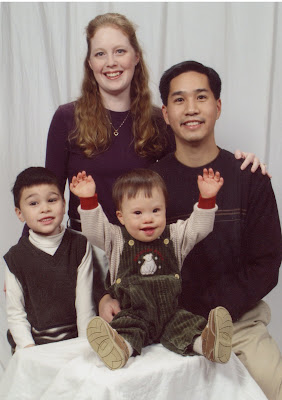For the Western mind the word manger invokes the words stable or barn. But in traditional Middle Eastern villages this is not the case. In the parable of the rich fool (Lk 12:13-21) there is mention of “storehouses” but not barns. People of great wealth would naturally have had separate quarters for animals. But simple village homes in Palestine often had but two rooms. One was exclusively for guests. That room could be attached to the end of the house or be a “prophet’s chamber” on the roof, as in the story of Elijah (1 Kings 17:19). The main room was a “family room” where the entire family cooked, ate, slept and lived. The end of the room next to the door, was either a few feet lower than the rest of the floor or blocked off with heavy timbers. Each night into that designated area, the family cow, donkey and a few sheep would be driven. And every morning those same animals were taken out and tied up in the courtyard of the house. The animal stall would then be cleaned for the day. Such simple homes can be traced from the time of David up to the middle of the twentieth century. I have seen them both in Upper Galilee and in Bethlehem.Bailey contends that it is likely that Mary and Joseph were given hospitality by a local family, and that Mary gave birth not by herself, but with the assistance of women from the village. Middle Eastern customs of hospitality and honor would have required it, especially since Joseph's family hailed from the region and likely still had extended relatives in the area. Bailey notes,
“No room in the inn” has taken on the meaning of “the inn had a number of rooms and all were occupied.” The “no vacancy sign” was already “switched on” when Joseph and Mary arrived in Bethlehem. But the Greek word does not refer to “a room in an inn” but rather to “space” (topos) as in “There is no space on my desk for my new computer.” It is important to keep this correction in mind as we turn to the word we have been told was an “inn.”The TNIV has a better translation of Luke 2:7: "there was no guest room available for them." The word that Luke uses is not the ordinary word for a commercial inn. In fact, it is used later on in Luke 22 to describe the upper room. Bailey concludes:
Merry Christmas!To summarize, a part of what Luke tells us about the birth of Jesus is that the holy family traveled to Bethlehem, where they were received into a private home. The child was born, wrapped and (literally) “put to bed” (anaklino) in the living room in the manger that was either built into the floor or made of wood and moved into the family living space. Why weren’t they invited into the family guest room, the reader might naturally ask? The answer is that the guest room was already occupied by other guests. The host family graciously accepted Mary and Joseph into the family room of their house.
The family room would, naturally, be cleared of men for the birth of the child, and the village midwife and other women would have assisted at the birth. After the child was born and wrapped, Mary put her newborn to bed in a manger filled with fresh straw and covered him with a blanket.
. . . that manger was in a warm and friendly home, not in a cold and lonely stable. Looking at the story in this light strips away layers of interpretive mythology that have built up around it. Jesus was born in a simple two-room village home such as the Middle East has known for at least three thousand years. Yes, we must rewrite our Christmas plays, but in rewriting them, the story is enriched, not cheapened.


4 comments:
Merry Christmas to you and your family!
Thank you for attempting to disperse this information! In some ways it's not the most important... but it's so weird that none of us know it until Ken Bailey writes this book! I actually mentioned the same thing in a piece Fuller had me write:
http://www.fuller.edu/news-and-events/home-feature-stories/christmas-2008-greene.aspx
Send my compliments to those that worked on the book at IVP--it was one of my favorites this year. :o)
Nice Fuller piece, Ashleigh! And you might be interested to know that Ken Bailey is now working on 1 Corinthians Through Middle Eastern Eyes. It probably won't be out for another three or four years, but he'll bring the same kind of Middle Eastern cultural perspective to the 1 Corinthians text.
Please make certain IVP publishes all the volumes Ken has time to write... I would love a whole series!
Post a Comment